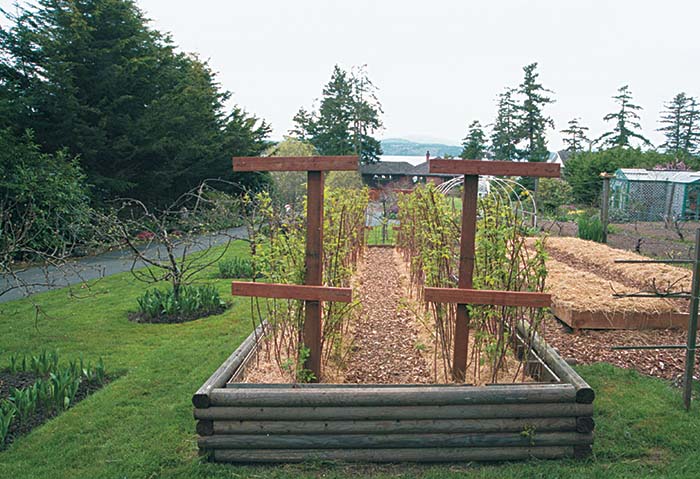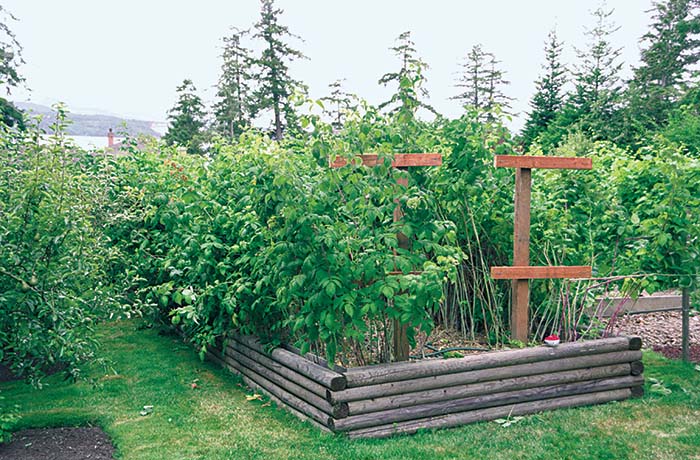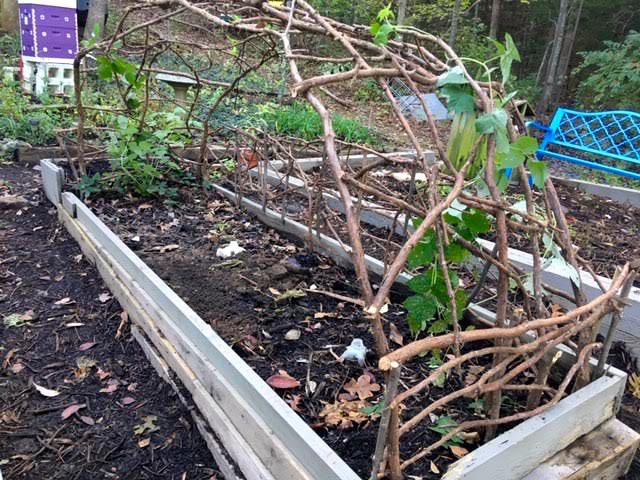Grow Juicy Raspberries All Summer Long With A Raised Bed
Grow Juicy Raspberries All Summer Long with a Raised Bed
Raspberries are a delicious and versatile fruit that can be enjoyed fresh, frozen, or cooked. They are also a good source of vitamins C and K, as well as fiber. If you are looking to grow your own raspberries, a raised bed is a great option.
Raised beds have several advantages over traditional gardening methods. They are easier to weed, they provide better drainage, and they can be made to any size or shape. This makes them ideal for growing raspberries, which are large and spreading plants.
In this blog post, we will discuss how to grow juicy raspberries all summer long in a raised bed. We will cover everything from choosing the right variety of raspberries to harvesting your crop.
Choosing the Right Variety
There are two main types of raspberries: summer-bearing and fall-bearing. Summer-bearing raspberries produce one crop of fruit in the summer, while fall-bearing raspberries produce two crops, one in the summer and one in the fall.
If you live in a warm climate, you may want to choose a fall-bearing variety of raspberries. This will allow you to enjoy fresh raspberries for a longer period of time. However, if you live in a cold climate, you may want to choose a summer-bearing variety. This will ensure that your raspberries have enough time to ripen before the weather gets too cold.
Some popular varieties of summer-bearing raspberries include 'Heritage', 'Red Radiance', and 'Glen Ample'. Some popular varieties of fall-bearing raspberries include 'Autumn Bliss', 'Fallgold', and 'Autumn Delight'.
Preparing the Raised Bed
Once you have chosen your variety of raspberries, you need to prepare the raised bed. The bed should be at least 4 feet wide and 6 feet long. The soil should be well-drained and amended with compost or manure.
You can also add some sand to the soil to improve drainage. Raspberries prefer a soil pH of around 6.0, so you may need to add some lime if your soil is acidic.
Planting the Raspberries
Raspberries should be planted in the spring or fall. Space the plants 2 to 3 feet apart. When planting, make sure to bury the crown of the plant about 1 inch below the soil surface.
Watering and Fertilizing
Raspberries need regular watering, especially during the hot summer months. Water the plants deeply once a week, or more often if the weather is hot and dry.
Raspberries also need to be fertilized regularly. You can use a balanced fertilizer, such as 10-10-10, or a fertilizer specifically designed for raspberries. Fertilize the plants in the spring and fall.
Pruning
Raspberries need to be pruned regularly to keep them healthy and productive. Summer-bearing raspberries should be pruned in the fall, after the harvest. Fall-bearing raspberries should be pruned in the spring, before the new growth starts.
Harvesting
Raspberries are ready to harvest when they are bright red and fully ripe. To harvest, gently pull the berries off the stem. Be careful not to damage the stems, as this will reduce the plant's productivity.
Raspberries are best eaten fresh, but they can also be frozen or cooked. If you are freezing raspberries, be sure to wash them and remove the stems before freezing.
Enjoying Your Raspberries
With a little care and attention, you can grow juicy raspberries all summer long in a raised bed. So what are you waiting for? Get started today!
Raspberries are a delicious and versatile fruit that can be enjoyed fresh, frozen, or cooked. If you're thinking about growing raspberries in your garden, a raised bed is a great option. Raised beds offer a number of advantages over traditional in-ground planting, including:
- Improved drainage
- Better soil aeration
- Easier access for harvesting
- Reduced weed growth
If you're interested in learning more about how to create a raspberry raised bed, I recommend visiting Garden Wiki. This website has a wealth of information on the topic, including step-by-step instructions, tips, and troubleshooting advice.
FAQ of raspberry raised bed
Q: What are the benefits of growing raspberries in a raised bed?
A: There are many benefits to growing raspberries in a raised bed. Raised beds are typically easier to weed and maintain than traditional garden beds, and they can also help to improve drainage and aeration. This is important for raspberries, as they do not like wet feet. Additionally, raised beds can be raised to a comfortable working height, which can be especially helpful for people with limited mobility.
Q: What size should a raspberry raised bed be?
A: The size of your raspberry raised bed will depend on how many plants you plan to grow. A good rule of thumb is to allow 2-3 feet of space between each plant. If you are only growing a few plants, you can get away with a smaller bed. However, if you plan to grow a large number of plants, you will need a larger bed.
Q: What type of soil should I use for a raspberry raised bed?
A: Raspberries grow best in well-drained, loamy soil that is rich in organic matter. If your soil is not already this type, you will need to amend it with compost or manure. You can also add sand to improve drainage.
Q: How do I trellis raspberries?
A: Raspberries can be trellised in a variety of ways. The most common method is to use a single wire trellis. To do this, you will need to install a wire fence or string along the length of your raised bed. The wire should be about 3 feet above the ground. Once the wire is in place, you can train the raspberry canes to grow along the wire.
Q: How do I care for raspberry raised beds?
A: Raspberries are relatively low-maintenance plants. However, there are a few things you need to do to keep them healthy and productive. Water your raspberry plants regularly, especially during hot, dry weather. You should also fertilize your plants once a year in the spring. In addition, you will need to prune your raspberry plants each year to remove dead, diseased, or unproductive canes.
Image of raspberry raised bed
- A raised bed with raspberry plants growing in it. The bed is made of wood and has a wire trellis for the raspberries to climb on.

- A close-up of a raspberry plant growing in a raised bed. The plant is covered in red raspberries.

- A raised bed with raspberry plants and other vegetables. The bed is filled with rich, dark soil.

- A raspberry raised bed with a wooden fence around it. The fence helps to keep the raspberries from spreading.
- A raspberry raised bed in a backyard garden. The bed is surrounded by flowers and other plants.


Post a Comment for "Grow Juicy Raspberries All Summer Long With A Raised Bed"